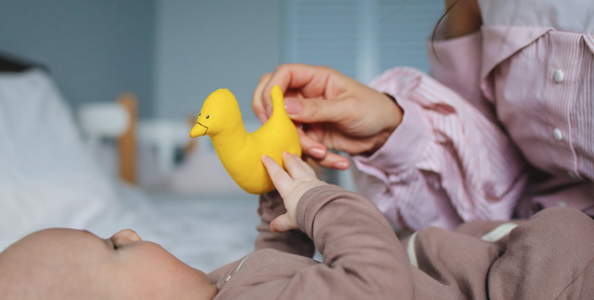Baby

What causes nappy rash and how to manage it?
Every child will get nappy rash at some stage during their first few years, it’s all part and parcel of what a baby goes through. Nappy rash can happen at any time, but is most common in babies who are between 6 and 12 months
What is it?
Nappy rash is a common form of skin inflammation (dermatitis) that appears as a patchwork of bright red skin on your baby’s bottom. Even the most cared-for babies can develop nappy rash.
What does it look like?
Your baby’s skin will appear red, sore, and may be irritated, chapped or swollen in places. Nappy rash can be isolated, with just a few prickly red spots in a small area, or more widespread with tender red bumps on your child’s inner thighs, particularly in skin folds and creases.
What are the causes?
A tight nappy that rubs and stops air from circulating can increase the risk of nappy rash, but there are lots of other factors which can contribute to your baby developing nappy rash, including:
- Premature birth
- Teething
- Illness or after a vaccination
- Antibiotics
- Sensitive skin or a family history of eczema
- An upset stomach, diarrhoea.
- A change in diet, such as weaning or switching from breast to bottle
Some children are sensitive to chemicals and may get a rash from the fragrance or other substances in disposable nappies or if you use cloth, the sensitivity could come from the laundry detergent used to wash the nappy. If you feel this is the cause of your child’s nappy rash, you should try switching to another brand of nappy or detergent.
New foods are notorious for causing nappy rashes in children. It’s always best to introduce foods one at a time so you can watch for reactions. Also, switching from breast to bottle milk can also trigger a nappy rash so be extra vigilant around this time.
Infection can cause a nappy rash. Since the area is moist and warm, bacteria thrive in the nappy. A rash that will not go away could be caused by a bacterial or yeast infection. Children who are taking antibiotics are at an increased risk of developing a yeast infection.
This is because the antibiotics will kill both good and bad bacteria. If you suspect a bacterial or yeast infection is causing the nappy rash you should consult with your baby’s paediatrician. Diarrhoea can also cause a nappy rash and will usually upset the skin if not cleaned off right away. If your child is suffering from diarrhoea ensure frequent nappy changes and always use a barrier ointment after each nappy change.
Can it be prevented?
It’s not always possible to prevent nappy rash, but there are some good guidelines to follow to give you the best chance.
- Change your baby’s nappy as soon as it becomes wet or soiled
- Wash the area carefully with damp cotton wool
- Ensure the skin is completely dry (pat or air dry) – don’t rub
- At every change, sprinkle a layer of Caldesene before putting on a fresh nappy. Being medicated, it attacks harmful bacteria and helps to prevent rashes
- Don’t over-tighten nappy
- Let baby’s bum “breathe” whenever possible – put a large towel under your baby’s bum and let them play and kick about without a nappy to allow their skin to “breathe”. Fresh air is perfect for his/her skin
How can it be treated?
Gently cleanse the affected area with a soap-free wash.
- Pat or air dry the skin
- Sprinkle a layer of Caldesene at every change before putting on a fresh nappy (or as directed by your pharmacist or physician). Caldesene Medicated Powder can protect your baby from nappy rash in several different ways. It’s specially formulated to create a barrier against wetness on your baby’s skin. Being medicated, it attacks harmful bacteria and helps to prevent rashes.
- Let baby’s bum “breathe” whenever possible – put a large towel under your baby’s bum and let them play and kick about without a nappy to allow their skin to “breathe”. Fresh air is perfect for his/her skin.
If you think the rash has had enough time to subside but hasn’t, you should contact your GP.
